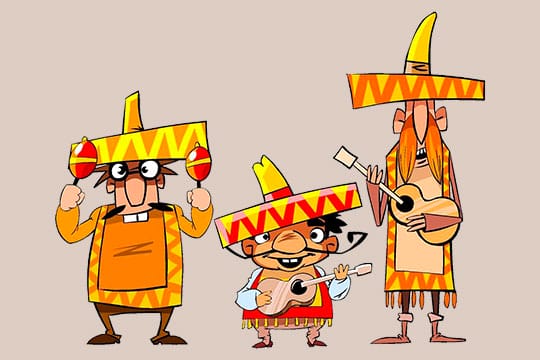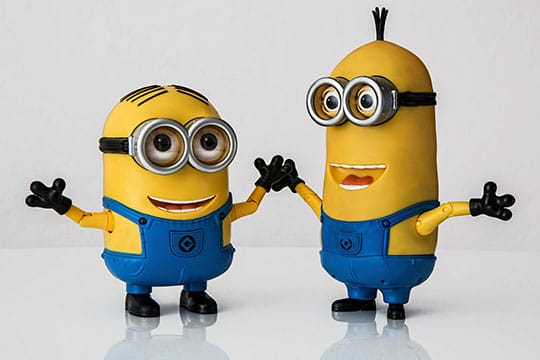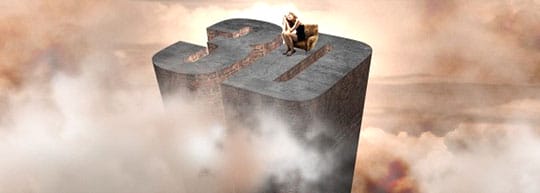We can find examples of 2D animation and 3D animation practically wherever we look. And the credit for this miraculous achievement must be given to the versatility that animation has achieved in recent times, the flair to capture our imagination, provide an impactful visual experience, and portray things both in real and fictional ways that are almost impossible to achieve otherwise.
2D animation is the oldest method of animation that has existed since the late 1800s. But, 2D animation has only become popular from around the last 40 years. Whereas, the high-end and sophisticated technology of 3D has made a compelling space for itself. Most of you movie buffs must have noticed that the number of 3D animated movies is increasing along with the quality of graphics. It is the result of the billions of dollars that the industry is investing in the 3D space. However, the question remains, will the dynamic growth of 3D animation result in leaving 2D animation behind, as the thing of the past?
We will walk you through the basics like what is 2D animation and 3D animation, their pros, and cons, and will 3D animation ever replace 2D.
What is 2D animation?

2D animation refers to a particular animation style where the character or object is contained flat, on the x and y plane. In 2D animation, you can draw the character by hand, on the computer, or using both. Even today, video animation artists start through drawing by hand despite the advanced technology. The animator or design artist creates the entire series of images portraying the complete story, frame after frame. When you put together these frames or images, they create the illusion of movement.
Besides, as your length of animation increases, you require a higher quantity of frames. Typically, in animation, a second in a video includes 24 frames, to bring the effect of movement. Some people may think of 2D animation as just a video animation style that is useful to create a kid’s content like cartoons. Within the past few years, the use of 2D animation has become much more diversified and mainstream. It is often the first preference within advertising, social media, application, websites, video gaming space, and similar viewing platforms.
Other than social media videos and clips on websites, 2D animation is still being used for movies and TV series.
Here are some well-known 2D animation projects:
- Classic Disney – Snow White, The Little Mermaid, The Jungle Book.
- TV Shows – Family Guy, The Simpsons, South Park, Rick, and Morty.
Recommended for you: Top 10 High-End Laptops for Graphics and Designing.
Pros of animating in 2D
- 2D animation is relatively easy to learn. You can easily find online courses, or you can look at Youtube tutorials to learn designing and animation tools.
- Creating 2D animation videos require a comparatively lower production cost. Because, the technology and artists are more accessible than with 3D animation.
- 2D animation is quick to create in comparison with 2D animation.
- It is high in demand, particularly since increasing brands across the world are leveraging off the medium of videos to reach their audience. It has become the most favorite form of people to consume information on social and online channels.
- 2D animation is simple and works without much complexity as it requires less technology and advanced software.
Cons of 2D animation
- It is relatively creating realistic-looking images with 2D animation in comparison to 3D.
- 2D animation requires the originality, skills, and creativity of the artist.
- There is a decrease in demand, as the growth of 3D animation in movies has been prevalent.
- Traditional animation may seem boring and static to viewers.
What is 3D animation?

As the name suggests, 3D is when you involve three dimensions in video creation. On the other hand, 2D animation only covers two dimensions i.e. the height of the object as well as it’s width, 3D also includes the third dimension depth or length. For example, if a square is analog for 2D animation, then a cube would be the same for 3D animation. The additional dimension, give 3D characters and objects a more realistic depth, which gives effect the something actually occupies the space. Besides, along with more realistic visuals, 3D also uses lighting effects, textures, and tiny details that make its whole feel and vibe very different from 2D animation.
Just like 2D animation, artists can also take the approach of hand drawing frames and connecting them with a specific sequence. However, this model of the concept is rarely used. Animators, more commonly, use computer software to create 3D animation. And it involves modeling where every single object in 3D has to be created firsthand. For the next step, the professionals design backgrounds and integrate mechanics or movements to the animation. With the third and last step, rendering is done and everything is put together to create the complete 3D animation. There can be additional steps as well, depending on the project to project, like adjusting sound and special effects.
3D animation has been around at least since the 1980s, but it was until Toy Story – the movie, was released in 1995 that 3D animation was noticed worldwide. This was also the time when people started associating CGI based graphics, with 3D. Even though 3D animation can be used in the same visual mediums as 2D, but it more popularly implemented within the creation of video games, animated films, architecture, and virtual reality simulation.
Here are some well-known examples of 3D animation:
- Pixar – Frozen and The Incredibles.
- Dreamworks – How to Train Your Dragon.
- Feature Film CGI – The robots in Transformers, the dinosaurs in Jurassic Park, and almost everything in Avatar.
You may like: The Art of Moving Images: Video Content Take Over the Web.
Pros of 3D animation
- 3D animation has more superior ability to portray life-like movements and motion communication.
- The visual appeal of the 3D animation is more realistic and eye-catching.
- With 3D animation, you can use 3D models for other specific projects in the future. It helps save time and reduce the cost of production.
- 3D technology provides high-quality results and more gameplay in comparison to 2D.
- 3D animation is in high demand and first preference for projects with a big budget for advanced technology.
- There is superior visual experience and accuracy or movement, and space for more innovation.
Cons of animating in 3D
- There is little space for imagination and creativity limitations when you involve movements in characters.
- 3D animation projects are often grand, and cam lack simplicity for a specific group of viewers.
- 3D animation takes a long time to understand and become an expert.
- Commercialization of the industry, sometimes a whole lot of effort, resources, and time spent on one project may not yield expected results.
Will 3D animation replace 2D animation?

Every single day, animators and other creatives continue to create diverse models of 2D animations as well as 3D model animations. There is no sure way to gauge how much work is being exactly done in which field. But, based on research by Statista, we know that the global animation market that was worth $259 billion in 2018 is now projected to reach $270 billion in 2020. The animation is rising beyond expectations, with consumers consistently looking for a higher quality of graphics within games, better visual effects within movies, and a boost in the overall experience.
2D animation vs. 3D animation – Cost
 3D animation is understandable, more costly to undertake than when you pursuing 2D animation. This is probably why most of the businesses around the world use 2D animation to create product demos videos, explainer videos, and other types of videos for social media and other online platforms. The easy accessibility of 2D animation companies and professionals is also making it easy for brands to utilize this medium. On the other hand, 3D animation high-end hardware and software, along with a long process to undertake the whole project. But, in case you are planning to make recurring investments into 3D animation, it might make future projects more affordable.
3D animation is understandable, more costly to undertake than when you pursuing 2D animation. This is probably why most of the businesses around the world use 2D animation to create product demos videos, explainer videos, and other types of videos for social media and other online platforms. The easy accessibility of 2D animation companies and professionals is also making it easy for brands to utilize this medium. On the other hand, 3D animation high-end hardware and software, along with a long process to undertake the whole project. But, in case you are planning to make recurring investments into 3D animation, it might make future projects more affordable.
2D animation vs. 3D animation – Demand
 Measure demand for 2D and 3D animation can be a little tricky, as both have different markets and platforms where they outperform each other. For example, 3D animation has higher demand within video gaming, high-end product presentations, film, and VR/AR industry. And, you see 2D animation making a more prominent mark within television shows, websites, advertisements for digital and traditional media, and mobile and web apps. 2D animation and 3D animation, both are popular to use in the mentioned visual mediums; both 2D animators and 3D animators are coveted professions around the globe.
Measure demand for 2D and 3D animation can be a little tricky, as both have different markets and platforms where they outperform each other. For example, 3D animation has higher demand within video gaming, high-end product presentations, film, and VR/AR industry. And, you see 2D animation making a more prominent mark within television shows, websites, advertisements for digital and traditional media, and mobile and web apps. 2D animation and 3D animation, both are popular to use in the mentioned visual mediums; both 2D animators and 3D animators are coveted professions around the globe.
2D animation vs. 3D animation – Quality
 Quality particular of an art form like video clips and films is highly subjective, as everyone can have a different definition of quality and what’s appealing for them. The results of 2D animation and 3D animation in terms of graphics and overall viewing experience is invariably different. Hence, if you are looking for more details, realism, and rich experience, you might opt for 3D animation. Whereas people who are seeking more inventive elements and otherworldly graphics, as a lot of digital marketers do, 2D might be a better option. The quality of the animation largely depends on the skills of the artists and the overall quality and pitch of the intended message instead of which type of animation was used.
Quality particular of an art form like video clips and films is highly subjective, as everyone can have a different definition of quality and what’s appealing for them. The results of 2D animation and 3D animation in terms of graphics and overall viewing experience is invariably different. Hence, if you are looking for more details, realism, and rich experience, you might opt for 3D animation. Whereas people who are seeking more inventive elements and otherworldly graphics, as a lot of digital marketers do, 2D might be a better option. The quality of the animation largely depends on the skills of the artists and the overall quality and pitch of the intended message instead of which type of animation was used.
You may also like: Corporate Video Content Crafting 101 – Video Marketing is here to Stay so you Should Join the Move.
The final thought

After analyzing these two popular animation styles in-depth and understand how they both occupy distinct space on the creative side, we can imply that declaring a single winner here is not possible. However, we can say the 3D animation might be the more dominant medium for animation. Whether it’s the need for advanced technology or more majestic appeal in feature films, 3D space commands high-end solutions and a big budget. But, that doesn’t mean that no one will bother with 2D animation, or one is better than the other. Today, 2D animation and 3D animation have organically occupied a splendid and distinguishable space. Even when technological prowess, both styles of animation are going to continue to gain massive traction and interest.
This article is written by Jane Collen. Jane is a distinguished and highly experienced industry voice for BuzzFlick. She is an incredibly eager learner and is always excited to write about new and trending topics. Her field of expertise is 2D animation and corporate video production trends.
 This article is written by Jane Collen. Jane is a distinguished and highly experienced industry voice for
This article is written by Jane Collen. Jane is a distinguished and highly experienced industry voice for 




